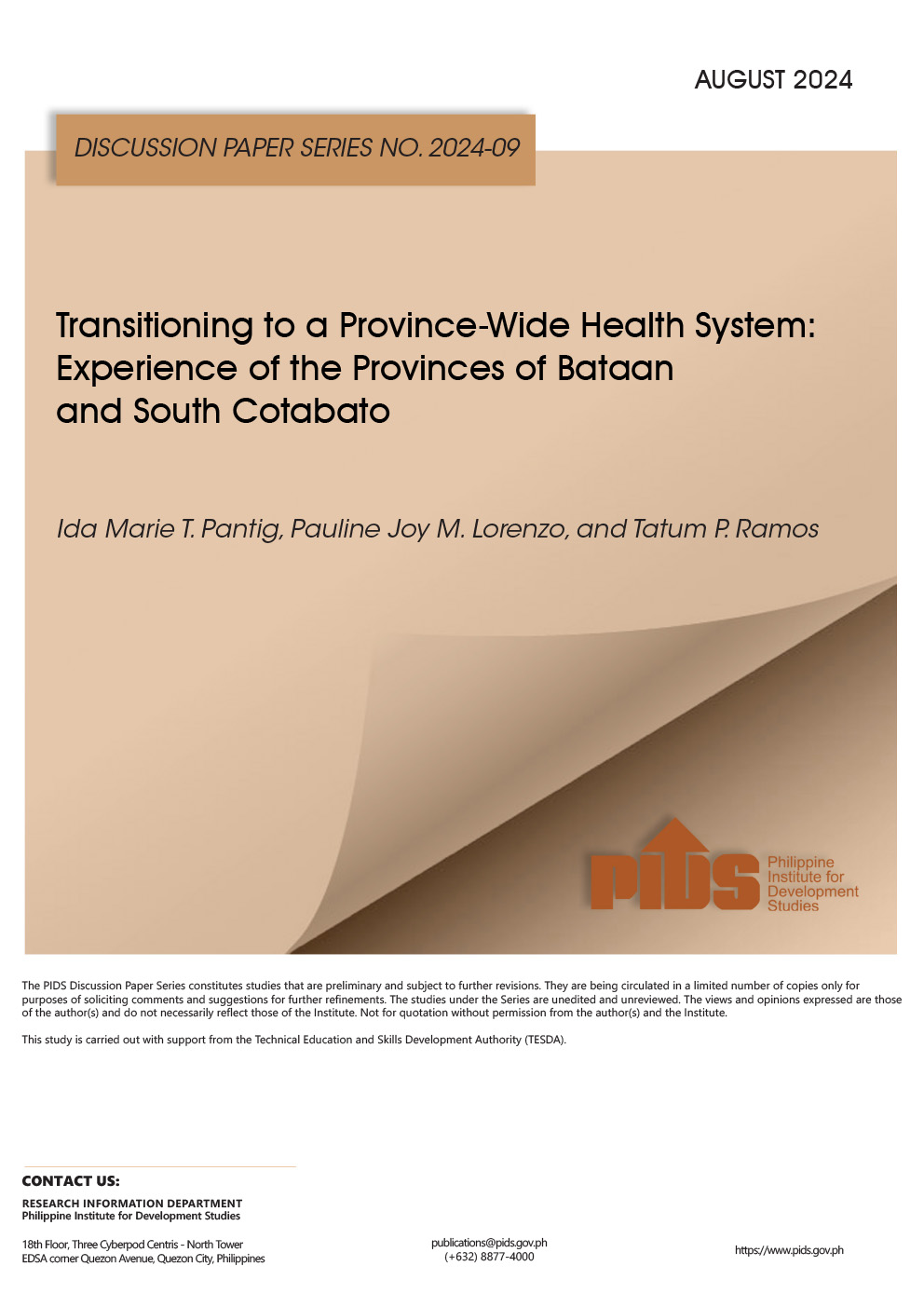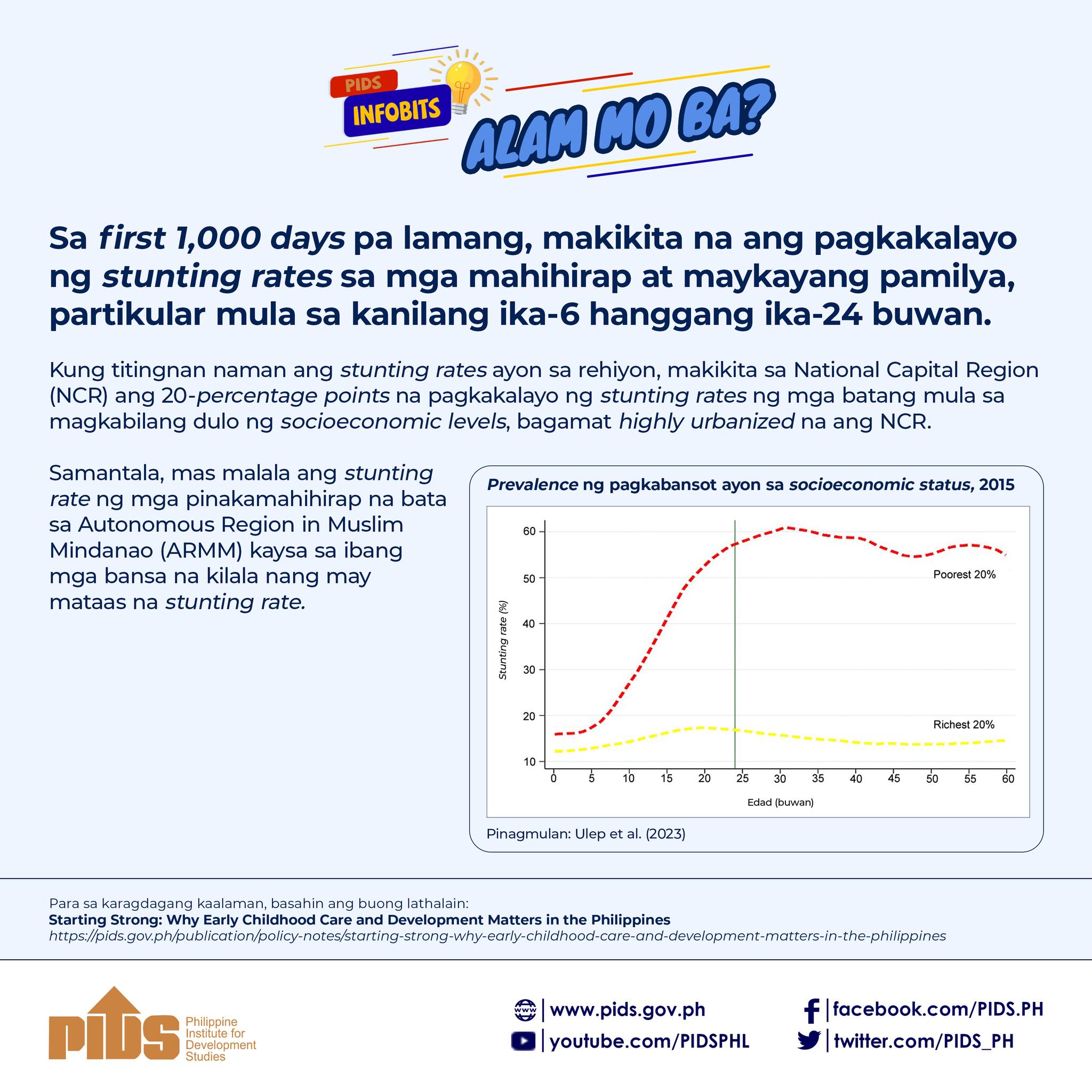THE Philippines invests less than a percent of its GDP for nutrition programs that could prevent stunting, according to a study released by state-owned think tank Philippine Institute for Development Studies (PIDS).
In the study, titled “A Review of Public Expenditures for Nutrition in National Government Agencies of the Philippines [2017–2019],” the country only invested 0.95 percent of its GDP for nutrition programs.
The study said this amounted to only P492.7 billion or an average annual per capita of P1,554.3. The amount only represents 7.9 percent of total government expenditures in 2017 to 2019.
“Overall, NGA [national government agencies] expenditures for nutrition are incoherent in that they fail to account for interconnected risk factors that cause stunting,” the authors led by PIDS Supervising Research Specialist Jhanna Uy said.
“We have large investments in households and maternal health, but lack investments in child health care and factors at home which directly determine child dietary intake [i.e. maternal education, adolescent fertility],” they added.
The study also found that international aid, including loans, for nutrition to the Philippines was one of the lowest among countries in South and Southeast Asia with high stunting prevalence.
The authors said the total international aid for nutrition the country received between 2014 and 2018 amounted only to $3.7 million or $3 cents per capita.
In comparison, the study showed that countries like Indonesia, which has a similar stunting prevalence and a higher GDP per capita than the Philippines, received $92 million or $34 cents per capita.
Majority of nutrition-related expenditures were for nutrition-sensitive activities accounting for 95.28 percent, followed by specific activities at 3.87 percent with the least for enabling interventions at 0.85 percent.
Between 2017 and 2018, the research found that financing allocated for disease Prevention and Management, a nutrition-sensitive intervention, decreased by half to P4 billion.
Specifically, the expenditures for the National Immunization Program decreased P1.2 billion and the Infectious Disease Program to P242 million.
Maternal and Child Health expenditures under the Family Health Sub-program of DOH sharply declined to P25 million (2017-2018) but since then increased to P627 million in 2019.
“We have investments in households, mothers, treatment options when a child is already malnourished, and supplementary feeding after children are irreversibly stunted—but we do not have visible investments in the first 1000 days of life which is crucial to prevent stunting,” the researchers said.
The Department of Social Welfare and Development (DSWD) accounted for the largest share at 61 percent or P293 billion.
In terms of budget execution efficiency, the researchers found that for all nutrition expenditures across agencies, the absorption remained steady from 2017-2019 at 73 percent.
Unfortunately, the data showed that the Department of Health (DOH) had one of the lowest absorptions at less than 38 percent next to nutrition-sensitive interventions of the Department of Education at 11 percent.












